Blanching is a FAST TWO STEP PROCESS for vegetables! You’ll be ready for freezing, party vegetables trays and all kinds of projects when you know how to blanch vegetables! It’s EASY, FAST and you already have everything you need right in your kitchen!
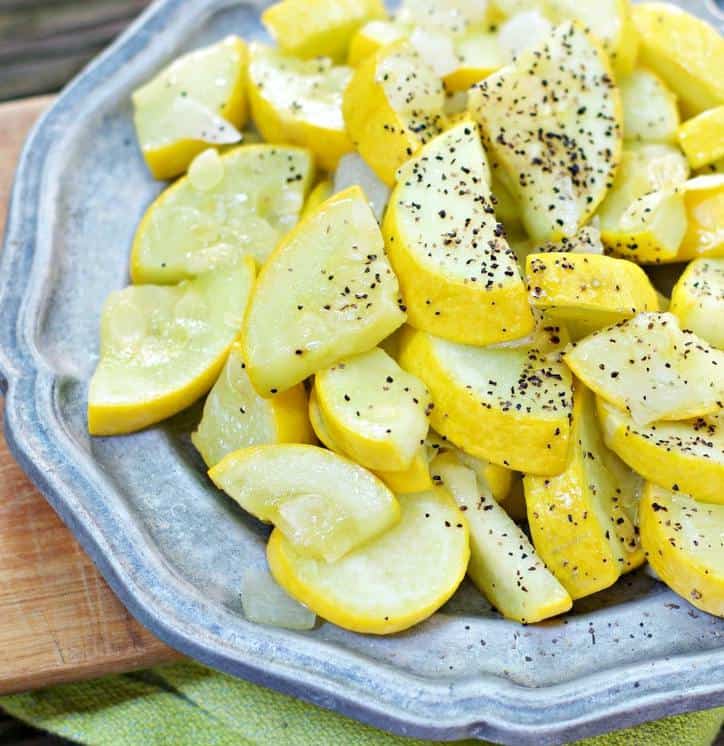
Why This Recipe Works
- FAST
- EASY
- You already have everything you need
Here’s How You Do It
STEP 1. Boil a large pot of water
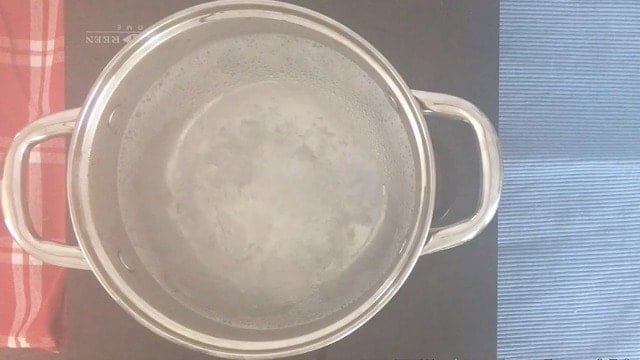
STEP 2. Make a large bowl of ice water.
STEP 3. Gather supplies and begin blanching.
***Gather tongs, kitchen spider and large slotted spoon together for this job. Using the appropriate tool for the vegetable you are blanching, gently put the vegetables in boiling water.
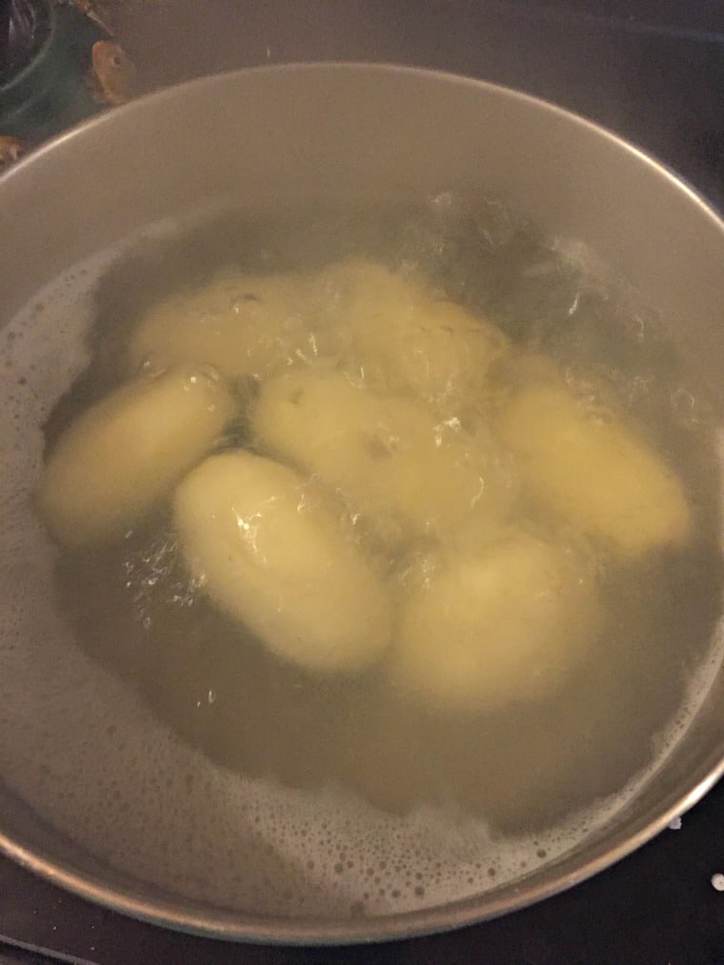
STEP 4. Shocking
You will see that the vegetable starts to change colors. Remove it when you see this. Take it from the boiling water within 2-3 minutes anyway and plunge into the ice water
***Plunge the vegetables into ice water immediately to stop the cooking process. Allow to soak for 2-3 minutes. Then remove and use for your recipe.
***This photo shows eggs being shocked in ice water, but it is the same concept***
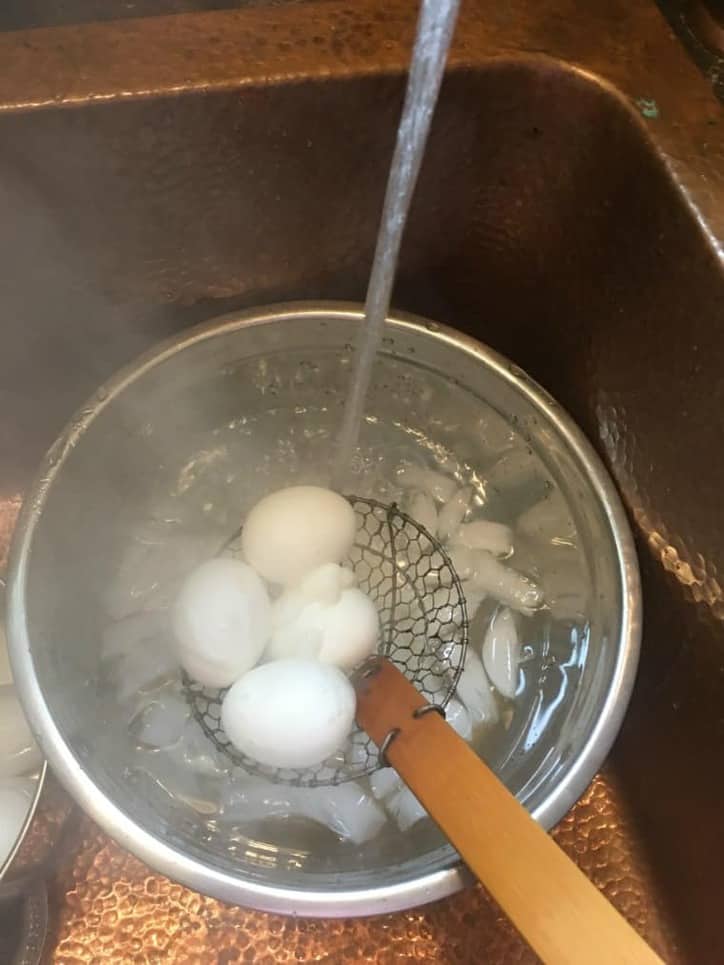
Why Do You Blanch Vegetables
There are several reasons you might blanch vegetables that include:
- Preparing them for freezing
- Pre Cooking them (also called parboiling).
- Blanching to brighten the color.
- Blanching to remove the peel (like with tomatoes or peaches).
Frequently Asked Questions FAQ’s
What Vegetables Need to Be Blanched?
You might blanch a number of vegetables to prepare them for freezing such as:
- Tomatoes
- Peaches
- Zucchini
- Squash
- Corn
- Green Beans
- Asparagus
- Cauliflower
- Potatoes
What Does Blanching Do?
It scalds the vegetables to prepare it in certain ways…
- Blanching for freezing stops the enzyme action that cause loss of color, flavor and texture.
- Blanching for pre-cooking purposes (parboiling) partially cooks the vegetables so that it cooks faster in whatever application you are using it for.
What Will Happen If I Don’t Blanch and Just Freeze the Vegetables Anyway?
When you simply freeze a vegetable without blanching it first, the vegetable is likely to become more mushy when you thaw it. The color will be less vibrant and sadly, many of the nutrients may be gone and broken down by the ice crystals.
Are There Other Ways To Blanch?
Yes, you can also blanch vegetables by using steam or microwaving, however, these are not the best options for the home cook.
- Steam applications are used by commercial businesses. . It would be difficult to gather enough steam to do this at home.
- Microwave blanching isn’t effective and not worth your time.
Do I Blanch Vegetables for a Vegetable Tray?
Blanching does give fresh veggies a leg up on a crudite platter. You’ll notice your vegetables have a nice crisp and tendter texture and a lovely bright color if you blanch them first.
Try blanching…
- Carrots
- Broccoli
- Green Beans
- And
- Yellow Beans
For your next dinner party. Offer with homemade Ranch Dressing, Tiger Sauce or Yum Yum Sauce and you won't go wrong.
What Does a Blanched Vegetable Taste Like?
A blanched vegetable tastes like itself. You are not cooking the vegetables completely. . Blanching simply softens the vegetable so that it is easier to eat.
If you have ever chewed a piece of raw broccoli and felt like you might as well be eating cardboard, you will appreciate a blanched piece of broccoli instead!
Why Do I Need to Salt Water for Blanching?
Salting the water is a chemistry class in the works! The salted water helps keep the water INSIDE the cells of the vegetable! This helps preserve flavor, texture and nutrients.
Will Salting the Water Change the Flavor of My Vegetables.
No, you won’t taste the salt from the blanching water in your vegetables at all. Besides, you are going to rinse them in a shock ice bath after blanching!
How Much Salt Do I Add to Blanch Water When I Blanch Vegetables
Add 2 Tablespoons of Kosher Salt to Blanch Water to help preserve color, flavor and nutrients.
What Tools Do I Need for Blanching?
You'll Need: (I give recommendations on the kitchen equipment that I prefer in my RESOURCES SECTION)
- A Stove Top
- A large cooking pot
- Large Bowl
- Ice
- Large slotted spoon, tongs or a kitchen spider.
This is a kitchen spider, I use mine all the time for all kinds of jobs. You can click the photo to go through to Amazon to compare prices. This is an affiliate link and I am an Amazon affiliate so if you purchase through this link I thank you and I earn a commission from that sale. It does not affect your purchase price at all, however.
Tips and Tricks for How To Blanch Vegetables
- Always put your water on to boil first, it takes a while to come to a boil and that gives you time to gather the rest of your supplies.
- SALT the blanching water according to the instructions I've given. It seems like a lot of salt, but you'll be glad when the color and nutrients are saved in your vegetables!
- Get your shocking ice water bowl ready, but don't put the ice and water in until just before you put the vegetables in to blanche.
- Have all small children to stay back from this operation. We don't want boiling water to drip on them.
- You will probably want to wear an apron, drips happen.
- If you are blanching more than one kind of vegetable, start with the lightest colored vegetables first and progress to the darker ones. The vegetables will tinge the water.
- You'll be amazed at all the benefits of blanching, which you can check out right here!
PRO TIP: Have a place for your finished vegetables to go to dry. I like to line a baking sheet with paper towels and set them there to dry.
Help Me Out, Please?
Leave me a 5 STAR comment in the comment section below. This helps others to find Loaves and Dishes on the internet and know that this is the place to find all of your recipe and cooking needs!
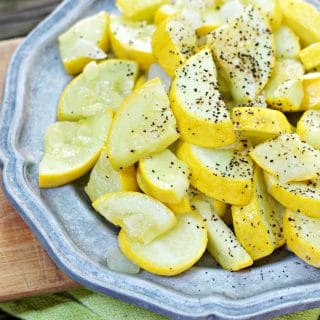
How to Blanch Vegetables
Ingredients
- 2 tbs kosher salt
- 1 lb vegetable
Instructions
- Put a large stock pot of 4 quarts of water on to boil over high heat on the stove top. Add salt to the water
- While waiting for the water to heat, gather your other supplies. Place a large bowl in the sink with 1 Quart of water in it. Do not add the ice until just before adding vegetables to the boiling water.
- When water comes to a boil, reduce heat to medium so that water is at a hard simmer.
- Add ice to the bowl of water in the sink.
- Add your vegetables to the boiling water quickly using tongs. Only add a few vegetables to the water at a time so that the water does not lose its boil
- Allow the vegetables to stay in the water just long enough to begin to change colors. You'll notice the color brightens.
- Remove the vegetables and plunge them immediately into the ice water bath. Allow to soak there for 2-3 minutes.
- Remove the vegetables to a paper towel lined tray to dry.
Notes
- Always put your water on to boil first, it takes a while to come to a boil and that gives you time to gather the rest of your supplies.
- SALT the blanching water according to the instructions I've given. It seems like a lot of salt, but you'll be glad when the color and nutrients are saved in your vegetables!
- Get your shocking ice water bowl ready, but don't put the ice and water in until just before you put the vegetables in to blanche.
- Have all small children to stay back from this operation. We don't want boiling water to drip on them.
- You will probably want to wear an apron, drips happen.
- If you are blanching more than one kind of vegetable, start with the lightest colored vegetables first and progress to the darker ones. The vegetables will tinge the water.
Nutrition
A VERSE TO SHARE
I think this verse is so interesting, don't you? We are told to be aware of what is going on, to pray and MOST OF ALL, love each other deeply. MORE THAN ANYTHING ELSE, LOVE EACH OTHER DEEPLY.
Why?
Because that is what will get us out of hot water.
Consider that one for a minute.
1 Peter 4: 7-8

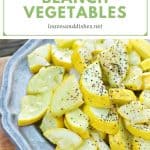
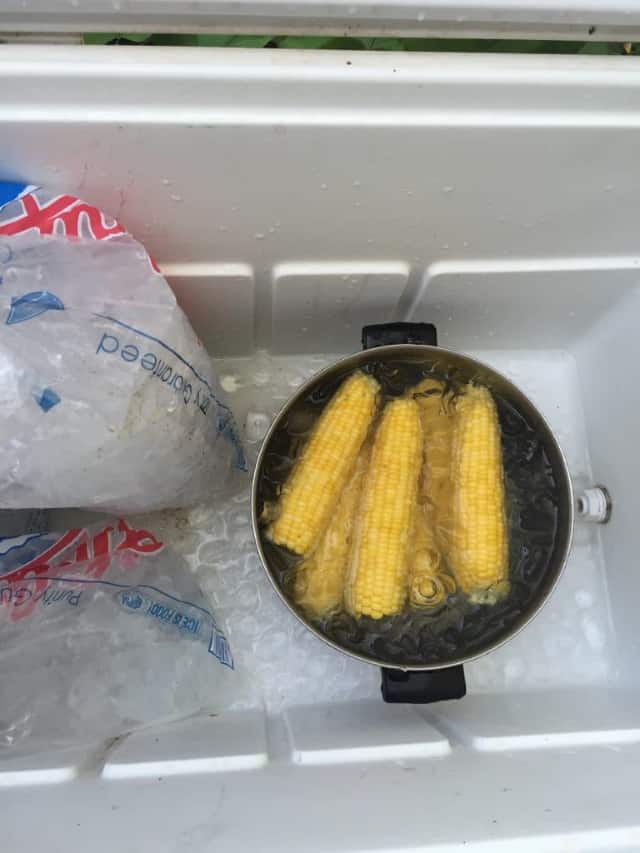

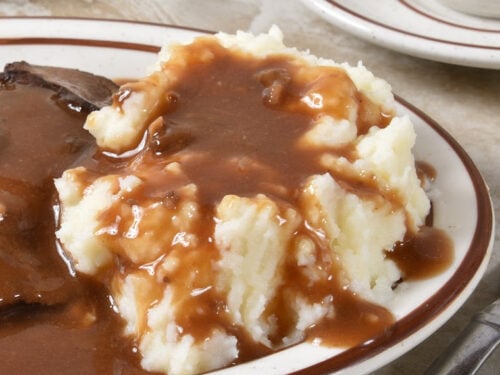
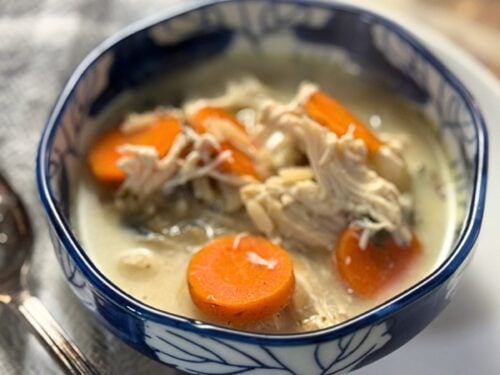
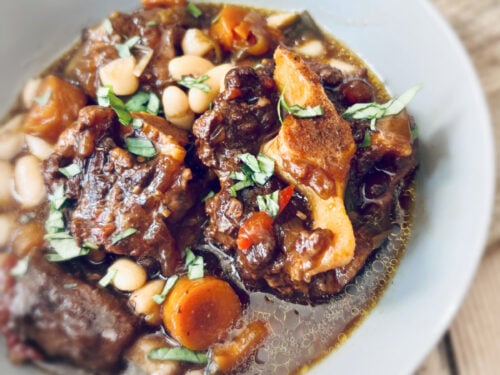

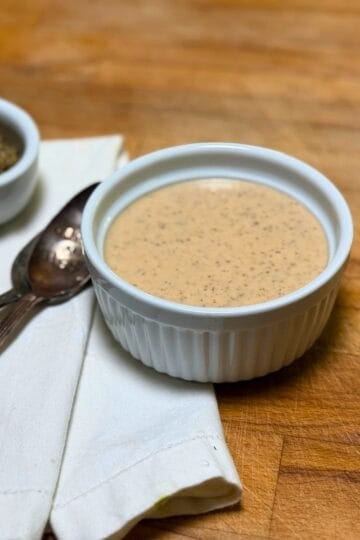


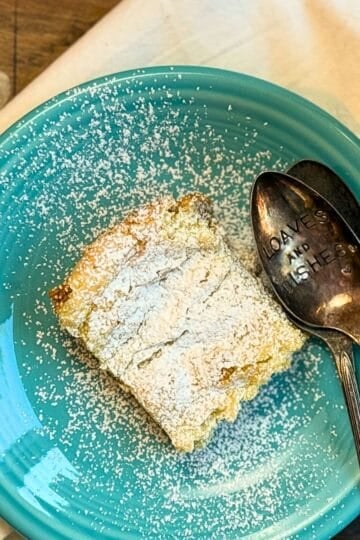
Jacqueline Downs says
Never realised it was soooo easy thank You. J
Wendi Spraker says
Yep! Super easy!
Lola says
Great recipe!
Wendi Spraker says
Wonderful! Thanks!
Wendi Spraker says
aggregate rating test
Helene says
Great job. Thank you
Wendi Spraker says
thanks!
Shannon says
Amazing recipe